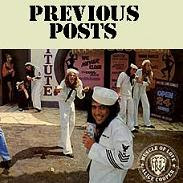Court Permits Dismantling Of ‘Toxic Ship’
The Supreme Court yesterday gave permission for shipbreakers to dismantle a former French cruise liner, the Blue Lady, that environmentalists say is lined with toxic asbestos. The ruling follows a year of controversy over the fate of the ship, originally launched in 1960 as the SS France, that environmental groups said contained some 1,200 tonnes of cancer-causing materials. Justices Arijit Pasayat and S H Kapadia gave permission to dismantle the ship at the Alang shipyard in the western state of Gujarat on the basis of a technical report submitted by an expert committee appointed by it, a court official said. Kapadia said the dismantling of the ship must be overseen by the district collector, the most senior bureaucrat in the district. According to the expert committee, the demolition of the ship should follow certain procedures to ensure worker safety. This includes decontamination before the breaking down of the ship as well as proper disposal of any toxic waste. Details of the judgment were not immediately known but environmental activists said yesterday’s order overlooked a 2004 court ruling. “The court had then ordered that the ship be decontaminated before it was dismantled,” said Ingrid Jenssen of the Indian Platform on Shipbreaking — an umbrella group including Green Peace and the Ban Asbestos Network. “Even today, there is no full inventory of what is on board,” Jenssen said, adding that the boat contained heavy metals and radioactive elements besides 1,200 tonnes of asbestos and carcinogenic polychlorinated biphenyls. The boat was turned away by Bangladesh in February 2006 on the grounds that its contents were too toxic for it to be dismantled there. But the Blue Lady was allowed into Indian waters last August and is currently beached 1,200m off the Alang coast, 200km northwest of India’s financial centre Mumbai.
BLUE LADY (ex FRANCE, NORWAY) It is now owned by Indian shipbreakers at the Alang yard. Environmental and labour rights groups have been battling lawyers representing workers at the Alang shipbreaking yard over the future of the boat. The workers say dismantling the vessel will bring much needed work while Greenpeace had said breaking up the ship before decontamination would endanger labourers’ health. Greenpeace has included the SS Norway — as the Blue Lady was known before its sale in 1979 - on a watchlist of 50 vessels which it said it feared would not be decontaminated before being scrapped. Environmental groups say one in six workers at the world’s biggest shipbreaking yard at Alang suffers from asbestosis, an incurable, lung-destroying disease caused by exposure to asbestos. Most seagoing ships end their lives at shipyards in India, Bangladesh, China or Pakistan. For major industrialised nations, safety and environmental laws make shipbreaking work hugely costly. But in the developing world, lax enforcement of safety and environmental rules and a vast supply of cheap labour can make shipbreaking a profitable proposition. Last year, France recalled the decommissioned warship Clemenceau after a battle by environmentalists who said it contained between 500 to 1,000 tonnes of asbestos. France said the ship only contained 45 tonnes of the material.




















<< Home